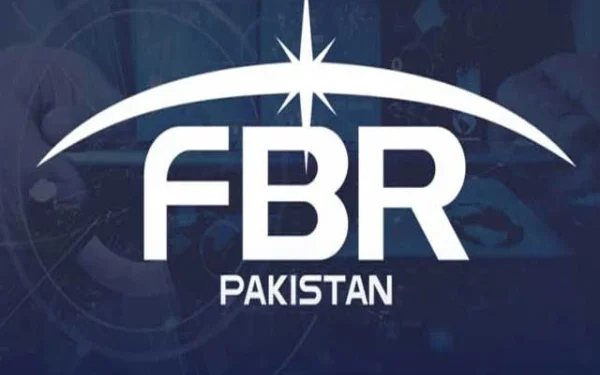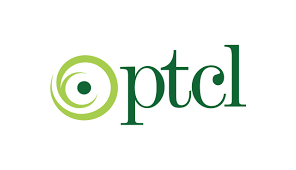A Bold Step Towards Digital Tax Reform in Pakistan
In a significant policy decision aimed at modernizing Pakistan’s outdated tax infrastructure, Prime Minister Shehbaz Sharif has ordered the winding up of Pakistan Revenue Automation Limited (PRAL)—the decades-old IT subsidiary of the Federal Board of Revenue (FBR)—within the next six months. The premier also directed the formation of a new autonomous, professionally-driven organization that will take over and transform the country’s tax digitization efforts.
The directive was reportedly issued during a high-level meeting last month, which was also attended by members of PRAL’s board. The decision marks a turning point in Pakistan’s ongoing struggle to reform and digitalize its tax collection machinery, which has long suffered from inefficiency, outdated technology, and institutional inertia.
Understanding PRAL: A Legacy System in Decline
What is PRAL?
Established in 1994, Pakistan Revenue Automation Limited (PRAL) has been the primary IT service provider to the FBR for over three decades. The company has been responsible for managing critical components of Pakistan’s taxation system, including:
- Online tax return filing
- Tax payment portals
- Taxpayer records management
- Real-time monitoring of revenue collections
- Data centers and server infrastructure
Despite its foundational role in the country’s tax infrastructure, PRAL’s hardware and software systems are now severely outdated, prompting concerns about the sustainability, security, and efficiency of its services.
A History of Missed Deadlines and Poor Performance
In 2019, the government of Pakistan secured a $400 million loan from the World Bank as part of a larger public sector reform initiative, with around $80 million allocated specifically for IT modernization within the FBR.
However, multiple internal audits and project reviews revealed that deadlines were repeatedly missed, and project goals remained unmet. According to officials, interdepartmental conflicts, poor project governance, and a lack of technical expertise led to delays in implementing critical upgrades across PRAL’s infrastructure.
Why PRAL Is Being Dissolved: Key Reasons
The decision to dismantle PRAL stems from multiple systemic failures, both in terms of operations and organizational structure. Some of the key issues include:
1. Technological Obsolescence
PRAL’s systems are based on decades-old architecture, some of which date back to the early 2000s. With rising cybersecurity risks and the increasing demand for real-time tax services, this outdated infrastructure has become a liability rather than an asset.
2. Governance Failures and Institutional Conflicts
Sources suggest that the division of IT functions between PRAL and the FBR’s internal IT wings created overlapping responsibilities and blurred accountability, severely hindering progress.
3. Inability to Attract Talent
Despite the growing need for IT expertise, PRAL has struggled to hire qualified professionals, particularly in critical roles like Chief Information Security Officer (CISO). In an era of growing cyber threats, this absence is particularly alarming.
4. Misuse of International Funding
Despite receiving substantial international funding, notably from the World Bank, PRAL failed to deliver on the agreed modernization goals. This has not only wasted public resources but also damaged Pakistan’s credibility with global development partners.
Prime Minister’s Vision: A New Era of Tax Digitization
Autonomous, Professional, and Modernized
Prime Minister Shehbaz Sharif has directed that the new IT organization replacing PRAL should be built from scratch, with a clear emphasis on:
- Professional independence
- Financial and administrative autonomy
- State-of-the-art technology
- World-class data security systems
- Transparent governance and accountability mechanisms
According to sources, the goal is to establish a cutting-edge digital entity that can facilitate Pakistan’s transition into a fully digitized tax regime, aligning with international standards and improving taxpayer services.
Major Challenges Ahead in Dissolving PRAL
While the decision to shut down PRAL may seem straightforward, implementing it within six months is expected to be a significant logistical and administrative challenge.
1. Transition of Services
PRAL currently handles the core backend services for millions of tax filers, businesses, and financial institutions. Migrating these services without causing disruptions will require meticulous planning and phased execution.
2. Talent Shortage
The recruitment of specialized IT professionals, especially in cybersecurity, data architecture, and AI integration, remains a significant hurdle, particularly given Pakistan’s brain drain in the tech sector.
3. Data Center Infrastructure Crisis
The situation is further complicated by the deteriorating condition of FBR’s three major data centers:
- FBR House, Islamabad
- Software Technology Park, Islamabad
- Customs House, Karachi
These facilities were last upgraded in 2010, and many of their critical systems have reached the end of their lifecycle. The government had aimed to inaugurate upgraded data centers by August 14, but insiders say that delays in server procurement and setup are likely to push the launch further.
Implications for Pakistan’s Tax System
1. Revenue Collection and Fiscal Goals at Risk
At a time when Pakistan is struggling to meet budgetary targets and IMF conditions, a disruption in digital tax infrastructure could threaten revenue collection, impacting everything from public sector salaries to development projects.
2. Compliance and Trust Issues
If the transition is not smooth, it may discourage taxpayers and reduce compliance, especially among small traders and businesses who are already wary of the digital tax net.
Tax Policy Challenges: Compromise with Traders Undermining Revenue Drive
Amid these structural changes, the Prime Minister has also expressed concern over the FBR’s “weak position” on tax enforcement. During a recent meeting on national tax policy, it was reported that:
- FBR backed away from implementing stricter tax measures due to compromises with powerful trader lobbies
- This retreat has the potential to jeopardize tax collection goals for FY2025-26
- Policymakers worry that political expediency is once again outweighing reform efforts
This highlights the ongoing challenge of balancing reform with populist pressure, a dilemma that has plagued multiple governments over the past two decades.
Expert Opinions: Is This the Right Move?
Support for Modernization
Many in the tech and financial sectors have welcomed the Prime Minister’s decision, stating that PRAL had long outlived its usefulness. According to IT expert Dr. Sohail Anwar, “The digital backbone of a country’s tax system cannot be built on legacy systems and outdated governance models. This change is long overdue.”
Concerns Over Execution
However, experts also caution that creating a new institution is not a silver bullet. According to policy analyst Ayesha Ghaus, “Unless the new organization is insulated from political interference and equipped with qualified leadership, we risk creating another PRAL in a new wrapper.”
Conclusion: A Bold But Risky Step Towards Tax Digitization
Prime Minister Shehbaz Sharif’s decision to wind up PRAL and replace it with a modern, autonomous IT organization marks a bold and transformative move in Pakistan’s ongoing efforts to digitize governance, enhance transparency, and boost tax collection.
However, the success of this initiative will depend on:
- Effective project execution
- Realistic timelines
- Recruitment of top-tier talent
- Seamless transition of taxpayer services
- Avoiding political compromise in future reforms
As Pakistan navigates economic challenges and works to fulfill international commitments, the modernization of its revenue system could be a game-changer—if done right.

























